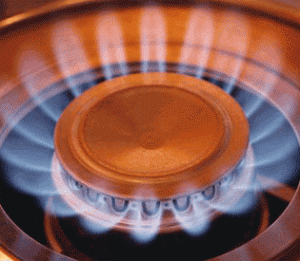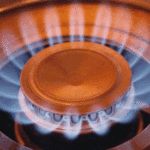 Natural gas traded close to yesterdays 6-1/2 month highs, after the Energy Information Administration reported a record November withdrawal in US gas inventories in the week ended November 29th. Weather forecasts called for bitter cold temperatures and heavy snows across much of US, which further supported the market.
Natural gas traded close to yesterdays 6-1/2 month highs, after the Energy Information Administration reported a record November withdrawal in US gas inventories in the week ended November 29th. Weather forecasts called for bitter cold temperatures and heavy snows across much of US, which further supported the market.
On the New York Mercantile Exchange, having reached yesterday the strongest level since May 30th, natural gas for delivery in December traded at $4.123 per million British thermal units at 08:30 GMT, down 0.23% on the day. Prices surged to a session high of $4.144, while day’s low stood at $4.122 per mBtu. The energy source added 4.3% this week, after adding 4.5% and 3.8% in the previous two 5-day-periods.
The Energy Information Administration reported on Thursday a larger-than-projected withdrawal in US inventories in the week ended November 29th, signaling a robust demand. Stockpiles fell by 162 billion cubic feet, a much larger decline than the projected withdrawal of 146 billion cubic feet, according to the median estimate of 21 analysts surveyed by Bloomberg. Last weeks drop was above the 5-year average decline of 41 billion cubic.
Total gas held in U.S. underground storage hubs equaled 3.614 trillion cubic feet and were 5.2% below last year’s amount of 3.814 trillion, and 2.8% less than the five-year average. In the East Region, stocks were 158 billion cubic feet below the 5-year average, following net withdrawals of 78 billion cubic feet. Stocks in the Producing Region were 32 billion cubic feet above the 5-year average of 1.191 billion cubic feet after a net withdrawal of 68 billion cubic feet. Stocks in the West Region were 22 billion cubic feet above the 5-year average after a net withdrawal of 16 billion cubic feet.
Teri Viswanath, director of commodities strategy at BNP Paribas SA in New York said after the EIA data release yesterday, cited by Bloomberg: “The records show that we’ve had only three other occasions in November where we’ve witnessed withdrawals of 100 billion cubic feet or greater, investors are going to be reluctant to short the gas market in the face of such constructive fundamentals.”
NatGasWeather.com predicted that most of US, excluding the eastern part, is encompassed by an Arctic outbreak, which brings bitter cold temperatures. The wintry conditions will reach the Eastern US by Saturday, bringing heavy snowfall across the Ohio River Valley, thus increasing demand for natural gas. The Arctic blast will impact the highest-consumption states of the Northeast by Saturday and will remain through next week, fueled by reinforcing cold blasts with areas of heavy snowfall.
The Southern states of Texas and California, which are also among the highest-consumption gas states, will experience below-normal temperatures until early next week. The current situation in much of the impacted regions are temperature anomalies reaching as high as 20-30 degrees Fahrenheit colder than average. Most of the US states will experience the freezing temperatures by the end of this week as well, leaving much of the nation under snowfall, freezing cold temperatures and strong winds. In the Northern Plains highs will probably not get above 0 degrees Fahrenheit during the next few days. Wellhead issues are possible in parts of New Mexico, Texas and Oklahoma due to the bitter cold temperatures.
NatGasWeather.com’s extended forecast for the week ending December 18th called for a reinforcing shot of Arctic air, which will sweep across the country early next week. There is likelihood of few winter storms over the northern and central US, with areas of accumulating snow and ice. The website imparted that higher-than-normal natural gas draws are expected during the week, with many of the highest consumption states experiencing cold conditions and temperature anomalies greater than 20-25°F. After December 16th through December 18th the jet stream will reorganize and probably no additional Arctic blasts will make it deep into the US territory, by impacting only parts of Southern Canada.
According to AccuWeather.com, the low in Boston on December 11th will be 17 degrees Fahrenheit, beneath the average of 30 degrees, while readings in New York will be 20 degrees Fahrenheit, 13 degrees below average. The low in Chicago on December 11th will be 12 degrees Fahrenheit or 12 degrees beneath average.
When cold weather is expected, natural gas surges as increased electricity demand to power air-conditioning calls for more supply of the fuel, which is used for a quarter of U.S. electricity generation. Above-average readings in the winter season have the opposite effect. Consumption usually picks up from November through March. According to the Energy Information Administration, power generation accounts for 32% of U.S. gas demand and 49% of U.S. households use the energy source for heating.





